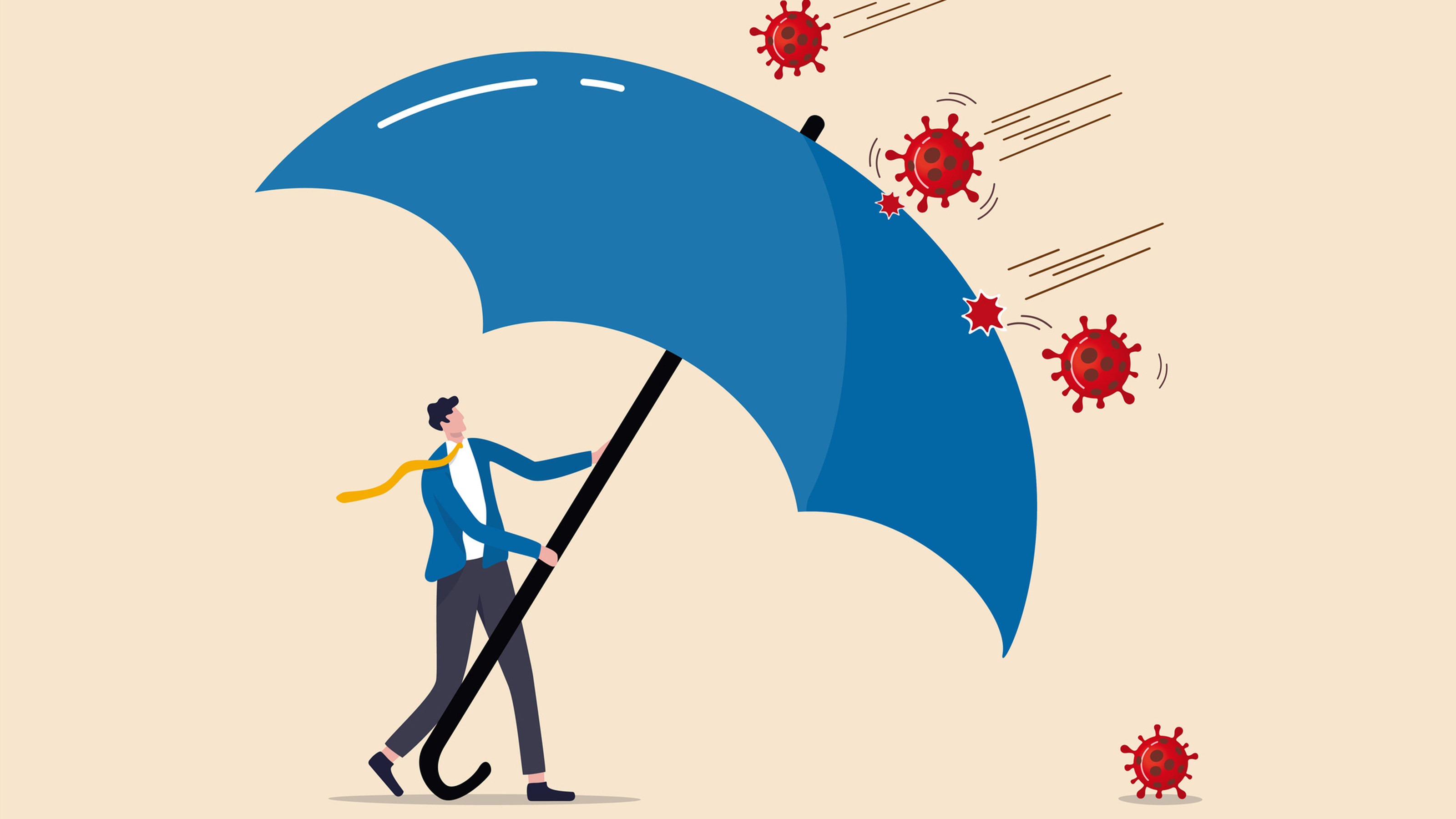Captive Insurance for Pandemics? What Small Businesses Can Do
The pandemic has revealed gaping holes in traditional insurance coverage for small businesses. Private insurance, including captive insurance, may be able to help.


Lately everyone’s a fortune teller, and they’re reading the leaves of how industries will change after 2020 — from where people will work to what dining will look like to whether we should still use public gyms.
While most predictions are sensationalistic and may or may not come to fruition, there’s one thing I’m sure will change for decades: how businesses think about and mitigate risk.
Five years ago, if I asked a business owner whether they had insured themselves against the possibility of a once-in-a-century pandemic and the domino effect of government shutdowns, they probably would have laughed me out the door.
From just $107.88 $24.99 for Kiplinger Personal Finance
Become a smarter, better informed investor. Subscribe from just $107.88 $24.99, plus get up to 4 Special Issues

Sign up for Kiplinger’s Free Newsletters
Profit and prosper with the best of expert advice on investing, taxes, retirement, personal finance and more - straight to your e-mail.
Profit and prosper with the best of expert advice - straight to your e-mail.
And now many businesses are dealing with the double-whammy of pandemic shutdowns combined with natural disasters, including the forest fires out West. Business owners are trying to focus on the future, keep their doors open and also grapple with the moving goal posts of the Paycheck Protection Program.
Private insurance vs. traditional insurance
For many of these smaller businesses, traditional property or casualty insurance isn't the answer. Coverage is limited and it’s too expensive. This is where private insurance comes in. If implemented correctly, it is a viable strategy — but not for everyone and not without some caveats.
Private is similar to captive insurance, in which a business or group of businesses set up their own funds to cover risks that likely aren’t covered by commercial insurers (such as pandemics). Both forms of insurance allow firms to keep funds they have set aside for claims but not used. Captive insurance is slightly more complex in that firms create their own insurance companies. This allows them to buy reinsurance (or umbrella insurance) for additional coverage if losses are higher than they expected. There are often significant tax benefits to private and captive insurance.
The problem is that, as with anything that’s good, there are those who seek to take advantage. That’s led to an increase in the IRS cracking down on fraudulent or illegitimate captives, such as the dentist who famously insured himself against a possible terrorist attack, but his policy denied coverage for that very event.
But that doesn’t mean you shouldn’t still utilize all the improved risk-mitigation options a captive can offer — it's just a reminder that you need to do it the right way. Like any private insurance company, your captive insurance company will be subject to regulation and only works when you’re covering legitimate business risks. But captives and similar alternatives have been an effective and financially beneficial way for small businesses to mitigate risk for decades, and that’s no different in the age of COVID.
The risk equation
First, we must acknowledge there are legitimate risks that simply aren’t covered under traditional insurance with the big companies. Part of what I love about my job is seeing the wide array of entrepreneurs and businesses that are out there, and each one of them has a unique set of risks.
But that doesn’t mean you’ll be able to simply check the “pandemic” box as you’re setting up your captive insurance company and call it a day. In fact, it’s unlikely a pandemic risk could be directly insured.
But you will be able to mitigate the risks posed by this (or any future) pandemic. You’ll just need to pay premiums into umbrella insurance categories where your business has a clear and legitimate risk — whether when under a pandemic or not. And before we get too far, keep in mind you’ll need to work with an independent actuary to assess your insurable risk.
That said, there are a few buckets where you may be able to mitigate some of the pandemic pain with private insurance:
- Administrative or regulatory actions: If you own a business in a highly regulated category, such as health care or finance, you may qualify for this insurable risk under captive insurance. These are industries where the political winds can blow in a new direction and a change in policy could literally kill your business. In the ever-shifting waters of Congress’ response to COVID-19, this is one that’s clearly worth taking into consideration.
- Enhanced cybersecurity risk: Maybe your workforce is fully remote now, or maybe your businesses is simply at increased risk due to the overall increase in cybercrime under COVID-19. And when you see that companies like Garmin have apparently been paying out big cyber ransoms, it’s a legitimate concern for many out there navigating a world that is suddenly much more virtual than it was several months ago.
- Loss of income from loss of key contracts, key customers or key referral sources: Right now, it’s very difficult to know where and when the supply chain could be disrupted. Since the beginning of the pandemic we’ve heard about everything from meat to paper towels being at risk. But let’s say you provide raw materials to a manufacturer, and you rely on two to three big clients for the majority of your profits. With the current unpredictability under COVID-19, there could be an outbreak at one of those businesses that shuts them down indefinitely, or a natural disaster that infringes on their ability to do work, and suddenly you’re out a major portion of your regular income. Through a captive, you can mitigate this risk.
- Loss of reputation: This could be a key umbrella of risk management for many businesses right now, especially restaurants, gyms or other public businesses. Let’s say you own a gym and someone goes online to claim they contracted the coronavirus there. Whether it’s true or not, that could easily lead to canceled memberships due to the loss in reputation, even though that change was completely out of your hands. There’s even a business interruption indemnity type of coverage for incoming social media — meaning if negative social media posts cause a loss of revenue, perhaps for the same gym example, you can receive reimbursement from your captive.
- Defense costs and legal expense reimbursements: It’s no surprise that with policies changing quickly and states taking a variety of approaches, COVID-19 is leading to a lot of litigation. Through a captive, you can insure your business and receive reimbursement for payments made to defend your business in litigation.
These are just some of the areas where a captive insurance solution could help to protect a small business as the pandemic continues to play out in unpredictable ways. But you won’t know for sure what’s possible until you talk to your financial adviser and get an independent assessment from an actuary.
And keep in mind, any claims made to a captive insurance company will be handled by an adjuster, just like they would with traditional insurance. That’s why it’s critical not to look for directly covering losses due to COVID, but shore up gaps where something like COVID could cause irreparable harm to your business.
You might not be able to tell the future with this approach, but you can at least rest assured that your businesses will be more resilient to whatever comes next.
Profit and prosper with the best of Kiplinger's advice on investing, taxes, retirement, personal finance and much more. Delivered daily. Enter your email in the box and click Sign Me Up.

Bruce Willey has been working with small to midsize businesses across the country for more than a decade, helping them navigate business and tax law in a variety of situations. His services include assisting with business start-ups, operations, growth, asset protection, exit planning and estate planning.
-
 Stocks Keep Climbing as Fed Meeting Nears: Stock Market Today
Stocks Keep Climbing as Fed Meeting Nears: Stock Market TodayA stale inflation report and improving consumer sentiment did little to shift expectations for a rate cut next week.
-
 Your End of Year Insurance Coverage Review Checklist
Your End of Year Insurance Coverage Review ChecklistStop paying for insurance you don't need and close coverage gaps you didn't know about with this year-end insurance review.
-
 Crypto Trends to Watch in 2026
Crypto Trends to Watch in 2026Cryptocurrency is still less than 20 years old, but it remains a fast-moving (and also maturing) market. Here are the crypto trends to watch for in 2026.
-
 Time Is Running Out to Make the Best Moves to Save on Your 2025 Taxes
Time Is Running Out to Make the Best Moves to Save on Your 2025 TaxesDon't wait until January — investors, including those with a high net worth, can snag big tax savings for 2025 (and 2026) with these strategies.
-
 I'm an Insurance Pro: If You Do One Boring Task Before the End of the Year, Make It This One (It Could Save You Thousands)
I'm an Insurance Pro: If You Do One Boring Task Before the End of the Year, Make It This One (It Could Save You Thousands)Who wants to check insurance policies when there's fun to be had? Still, making sure everything is up to date (coverage and deductibles) can save you a ton.
-
 4 Smart Ways Retirees Can Give More to Charity, From a Financial Adviser
4 Smart Ways Retirees Can Give More to Charity, From a Financial AdviserFor retirees, tax efficiency and charitable giving should go hand in hand. After all, why not maximize your gifts and minimize the amount that goes to the IRS?
-
 3 Year-End Tax Strategies for Retirees With $2 Million to $10 Million
3 Year-End Tax Strategies for Retirees With $2 Million to $10 MillionTo avoid the OBBB messing up your whole tax strategy, get your Roth conversions and charitable bunching done by year's end.
-
 'Politics' Is a Dirty Word for Some Financial Advisers: 3 Reasons This Financial Planner Vehemently Disagrees
'Politics' Is a Dirty Word for Some Financial Advisers: 3 Reasons This Financial Planner Vehemently DisagreesYour financial plan should be aligned with your values and your politics. If your adviser refuses to talk about them, it's time to go elsewhere.
-
 For a Move Abroad, Choosing a Fiduciary Financial Planner Who Sees Both Sides of the Border Is Critical
For a Move Abroad, Choosing a Fiduciary Financial Planner Who Sees Both Sides of the Border Is CriticalWorking with a cross-border financial planner is essential to integrate tax, estate and visa considerations and avoid costly, unexpected liabilities.
-
 I'm a Financial Adviser: This Tax Trap Costs High Earners Thousands Each Year
I'm a Financial Adviser: This Tax Trap Costs High Earners Thousands Each YearMutual funds in taxable accounts can quietly erode your returns. More efficient tools, such as ETFs and direct indexing, can help improve after-tax returns.
-
 A Financial Adviser's Guide to Divorce Finalization: Tying Up the Loose Ends
A Financial Adviser's Guide to Divorce Finalization: Tying Up the Loose EndsAfter signing the divorce agreement, you'll need to tackle the administrative work that will allow you to start over.